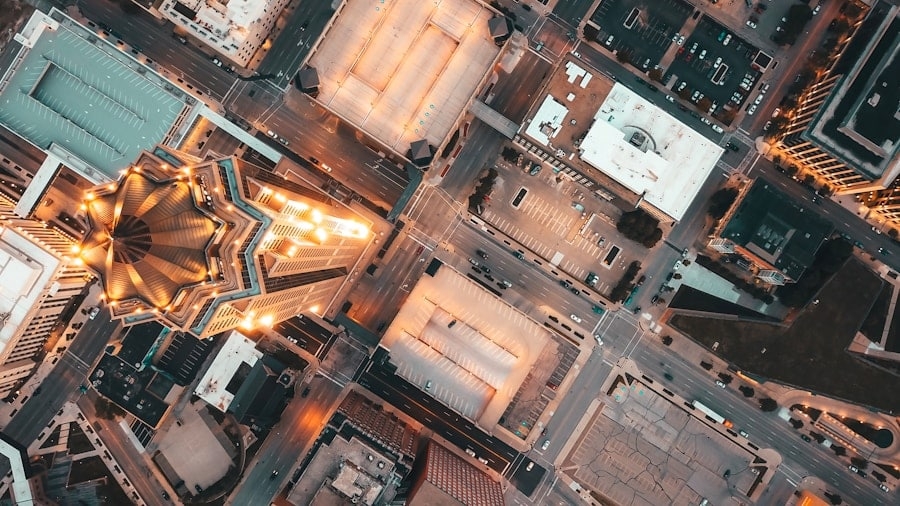The rapid advancement of artificial intelligence (AI) and robotics has ushered in a new era of possibilities for sustainable urban development. As cities around the globe grapple with the challenges posed by rapid urbanization, climate change, and resource depletion, the integration of these technologies offers innovative solutions that can enhance the livability and sustainability of urban environments. AI and robotics are not merely tools; they represent a paradigm shift in how we approach urban planning, resource management, and community engagement.
By leveraging data-driven insights and automation, cities can optimize their operations, reduce their environmental footprint, and improve the quality of life for their residents. In this context, sustainable urban development encompasses a holistic approach that integrates economic, social, and environmental considerations. The deployment of AI and robotics can facilitate this integration by providing real-time data analysis, predictive modeling, and automated systems that enhance efficiency across various sectors.
From energy management to waste reduction, these technologies can help cities transition towards more sustainable practices while addressing the pressing needs of their populations. As we explore the multifaceted roles of AI and robotics in urban settings, it becomes evident that their potential extends far beyond mere efficiency gains; they can fundamentally reshape the way we envision and build our cities.
Key Takeaways
- AI and robotics play a crucial role in sustainable urban development by improving efficiency and reducing environmental impact.
- In energy efficiency and conservation, AI and robotics can optimize energy usage, monitor and control systems, and enable predictive maintenance.
- Waste management and recycling benefit from AI and robotics through automated sorting, processing, and monitoring of waste streams.
- AI and robotics enhance transportation and mobility by enabling autonomous vehicles, traffic management, and smart infrastructure.
- Urban agriculture and food production can be improved with AI and robotics through precision farming, automated harvesting, and monitoring of crop health.
The Role of AI and Robotics in Energy Efficiency and Conservation
Smart Grids and Energy Distribution
Cities like San Diego have successfully implemented smart grid technologies that utilize AI to balance energy loads, reducing reliance on fossil fuels and minimizing greenhouse gas emissions. This innovative approach has paved the way for a more sustainable future.
Robotics in Energy Conservation
Robotics also plays a significant role in energy conservation efforts. Automated systems in buildings can adjust heating, ventilation, and air conditioning (HVAC) settings based on occupancy patterns detected through sensors, enhancing comfort for occupants while leading to substantial energy savings. In commercial buildings, robotic systems can perform routine maintenance tasks, ensuring that equipment operates at peak efficiency.
Optimizing Energy Consumption through Robotics
For instance, robotic cleaning systems equipped with AI can optimize their cleaning routes based on real-time data, reducing energy consumption while maintaining cleanliness standards. This synergy between AI and robotics has the potential to revolutionize the way we approach energy efficiency in urban development.
AI and Robotics in Waste Management and Recycling

Waste management is another critical area where AI and robotics are making significant strides towards sustainability. Traditional waste management practices often struggle with inefficiencies and high operational costs. However, the integration of AI technologies can revolutionize this sector by improving sorting processes and optimizing collection routes.
Machine learning algorithms can analyze waste composition data to enhance recycling rates by identifying materials that can be recovered more effectively. For instance, cities like Amsterdam have adopted AI-driven sorting systems that use computer vision to distinguish between different types of recyclables, significantly increasing the efficiency of recycling operations. Robotics also plays a crucial role in automating waste collection processes.
Autonomous waste collection vehicles equipped with AI can navigate urban environments more efficiently than human-operated trucks. These vehicles can analyze traffic patterns and adjust their routes in real-time to minimize fuel consumption and reduce emissions. Moreover, robotic arms in recycling facilities can handle materials with precision, reducing contamination rates and improving the overall quality of recycled products.
By streamlining waste management processes through AI and robotics, cities can not only reduce landfill waste but also promote a circular economy where materials are reused and repurposed.
Enhancing Transportation and Mobility with AI and Robotics
Transportation is a vital component of urban life, yet it often contributes significantly to congestion and pollution. The integration of AI and robotics into transportation systems offers innovative solutions to enhance mobility while reducing environmental impacts. Smart traffic management systems utilize AI algorithms to analyze real-time traffic data, optimizing signal timings to alleviate congestion.
For example, cities like Los Angeles have implemented adaptive traffic signals that adjust their timings based on current traffic conditions, resulting in smoother traffic flow and reduced emissions. Moreover, autonomous vehicles represent a transformative shift in urban transportation. These vehicles leverage AI to navigate complex urban environments safely and efficiently.
By reducing the need for personal car ownership, autonomous vehicles can decrease traffic congestion and lower carbon emissions. Additionally, ride-sharing platforms powered by AI can optimize vehicle utilization by matching passengers with nearby drivers, further reducing the number of vehicles on the road. Cities such as Singapore are at the forefront of testing autonomous public transport systems that promise to enhance mobility while minimizing environmental impacts.
AI and Robotics in Urban Agriculture and Food Production
Urban agriculture is gaining traction as a sustainable solution to food security challenges in densely populated areas. AI and robotics are playing an increasingly important role in optimizing food production within urban settings.
For instance, companies like AeroFarms utilize advanced algorithms to manage their indoor farms efficiently, resulting in higher yields with lower resource inputs. Robotic systems are also being deployed in urban agriculture to automate labor-intensive tasks such as planting, harvesting, and monitoring crop health. Drones equipped with AI can survey large agricultural areas quickly, identifying areas that require attention or intervention.
This technology not only increases productivity but also reduces the need for chemical inputs by enabling precise application based on real-time data analysis. As cities continue to embrace urban agriculture initiatives, the integration of AI and robotics will be essential for maximizing food production while minimizing environmental impacts.
Improving Public Safety and Security with AI and Robotics

AI-Powered Surveillance for Crime Prevention
AI-powered surveillance systems can analyze video feeds in real-time to detect suspicious activities or identify potential threats. This technology has the potential to revolutionize crime prevention by enabling authorities to respond quickly and effectively to emerging situations.
Enhancing Emergency Response with Robotics
Robotics also plays a crucial role in enhancing public safety during emergencies. Drones equipped with cameras can provide real-time situational awareness during natural disasters or large public events, allowing emergency responders to assess conditions quickly and allocate resources accordingly. Additionally, robotic systems can be deployed for hazardous material handling or search-and-rescue operations in environments that pose risks to human responders.
Creating Safer Cities with AI and Robotics
By leveraging AI and robotics for public safety initiatives, cities can create safer environments for their residents while improving response times during emergencies. This integration has the potential to make a significant impact on public safety, and cities like Chicago are already seeing the benefits of implementing predictive policing algorithms to allocate police resources more effectively.
AI and Robotics in Smart City Planning and Infrastructure Management
The concept of smart cities revolves around the integration of technology into urban planning and infrastructure management to enhance efficiency and sustainability. AI plays a central role in this transformation by providing data-driven insights that inform decision-making processes. Urban planners can utilize predictive analytics to model the impacts of various development scenarios on traffic patterns, resource consumption, and environmental sustainability.
For instance, cities like Barcelona have embraced smart city initiatives that leverage AI to optimize resource allocation across various sectors. Robotics also contributes significantly to infrastructure management by automating maintenance tasks that are often labor-intensive or hazardous. Drones equipped with inspection cameras can assess the condition of bridges, roads, and other critical infrastructure without putting human workers at risk.
This proactive approach allows cities to identify maintenance needs before they escalate into costly repairs or safety hazards. Furthermore, robotic systems can assist in construction projects by performing repetitive tasks with precision, reducing construction timelines while ensuring quality standards are met.
Challenges and Opportunities for AI and Robotics in Sustainable Urban Development
While the potential benefits of integrating AI and robotics into sustainable urban development are substantial, several challenges must be addressed to realize these opportunities fully.
Ensuring equitable access to AI-driven solutions is crucial for fostering inclusive urban development that benefits all residents.
Additionally, ethical considerations surrounding data privacy and security must be prioritized as cities increasingly rely on data-driven technologies. The collection and analysis of vast amounts of data raise concerns about surveillance and individual privacy rights. Establishing clear guidelines for data usage while ensuring transparency will be essential for building public trust in these technologies.
Despite these challenges, the opportunities presented by AI and robotics in sustainable urban development are immense. As cities continue to evolve into smart ecosystems that prioritize sustainability, innovation will be key to addressing pressing urban challenges. By fostering collaboration between governments, private sector stakeholders, and communities, cities can harness the full potential of these technologies to create resilient urban environments that thrive in harmony with nature while meeting the needs of their inhabitants.
In a related article,

